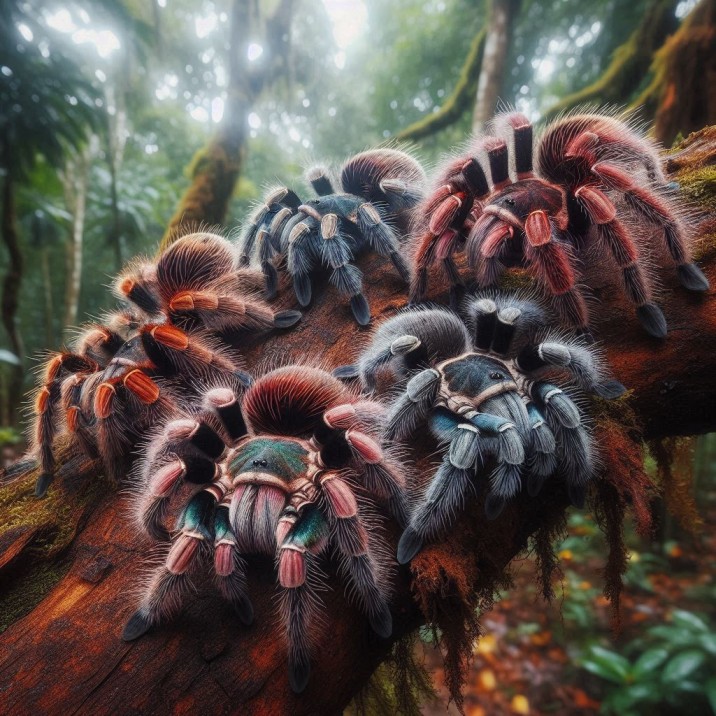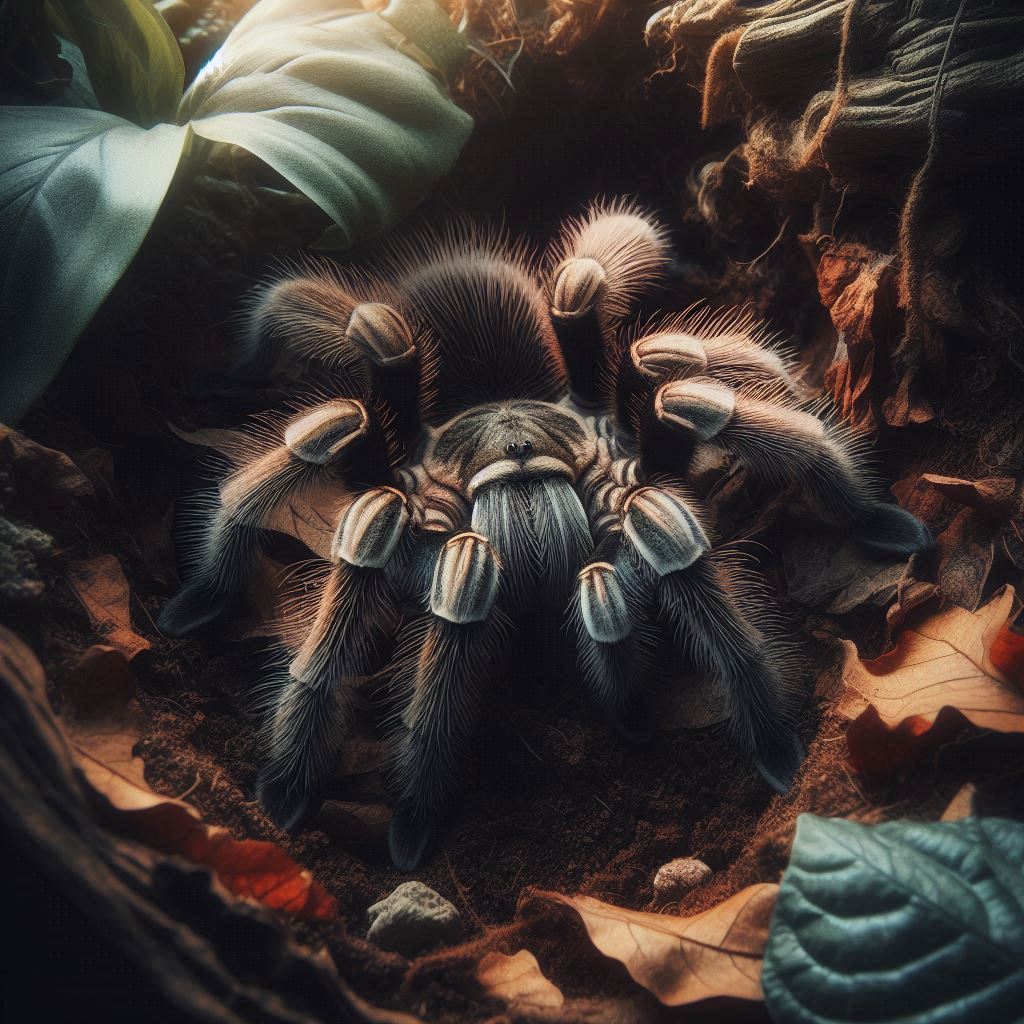Table of Contents
Table of Contents
- Introduction
- Understanding Spiders and Arachnids
- What Defines a “True” Spider?
- Tarantulas: An Overview
- Comparing Tarantulas and True Spiders
- Taxonomy and Classification
- Are Tarantulas True Spiders?
- Misconceptions and Common Myths
- Conclusion
- FAQs about are Tarantulas True Spiders
Introduction
When it comes to the world of arachnids, one of the most common questions that arise is: Are tarantulas true spiders? This query often leads to a myriad of discussions, debates, and sometimes even confusion. Tarantulas, with their large, hairy bodies and imposing appearance, are fascinating creatures that capture the curiosity of many. In this blog post, we will delve deep into the world of spiders and tarantulas, uncovering the truths and myths that surround them. By the end of this article, you will have a clear understanding of what defines a “true” spider and whether tarantulas fit into this category.

Understanding Spiders and Arachnids
What Are Arachnids?
Arachnids are a class of joint-legged invertebrate animals in the subphylum Chelicerata. This group includes a wide range of creatures, such as spiders, scorpions, ticks, and mites. Arachnids are characterized by having eight legs, no antennae, and a body divided into two segments: the cephalothorax and the abdomen.
The Diversity of Spiders
Spiders are a subgroup within the arachnids, known for their ability to produce silk and create webs. There are over 48,000 species of spiders documented, each with unique characteristics and behaviors. These spiders are further divided into various families, each with distinct traits.
What Defines a “True” Spider?
Characteristics of True Spiders
“True spiders” belong to the order Araneae, which is the largest order of arachnids. Here are some key features that define true spiders:
- Eight Legs: True spiders have eight legs, which is a common feature among arachnids.
- Fangs and Venom: They possess fangs capable of injecting venom, which they use to subdue their prey.
- Silk Production: True spiders have specialized silk glands used for web-building, hunting, and protecting their eggs.
- Body Segmentation: Their bodies are divided into two main parts: the cephalothorax and the abdomen.
Distinguishing Features
True spiders have a unique anatomy that includes spinnerets for silk production and specialized eyes that provide them with a keen sense of vision. They also have a wide variety of hunting strategies, from web-spinning to active hunting.
Tarantulas: An Overview
Physical Appearance
Tarantulas are among the largest spiders in the world, known for their hairy bodies and imposing size. They can range in size from a few centimeters to nearly a foot in leg span. Their bodies are covered with fine hairs that serve sensory and defensive purposes.
Habitat and Distribution
Tarantulas are predominantly found in tropical, subtropical, and arid regions. They are ground-dwelling spiders that prefer to live in burrows or under rocks and logs. Their distribution includes parts of North and South America, Africa, Asia, and Australia.
Behavior and Diet
Tarantulas are primarily nocturnal hunters. They rely on stealth and ambush tactics to catch their prey, which mainly consists of insects, small mammals, and other arthropods. Unlike web-spinning spiders, tarantulas do not rely on webs to catch their prey but use their powerful jaws and venom to subdue them.
Comparing Tarantulas and True Spiders
Anatomical Differences
- Size and Build: Tarantulas are generally much larger and more robust compared to typical true spiders. They have a heavier build and longer, thicker legs.
- Hair: Tarantulas have a distinct covering of hair, which is not as common in other spiders.
- Spinnerets: While true spiders have well-developed spinnerets for silk production, tarantulas have less prominent spinnerets and do not rely on webs for capturing prey.
Behavioral Differences
- Web Use: True spiders often rely on webs for catching prey, whereas tarantulas use silk mainly for lining their burrows and protecting their eggs.
- Hunting Style: True spiders may use webs or active hunting strategies, while tarantulas rely on ambush tactics and their physical strength to overpower prey.
Taxonomy and Classification
The Order Araneae
Tarantulas, like all spiders, belong to the order Araneae. This order is divided into two suborders: Mygalomorphae and Araneomorphae. True spiders belong to Araneomorphae, which is characterized by their more advanced web-spinning capabilities and diverse hunting strategies.
Mygalomorphae: The Tarantulas’ Suborder
Tarantulas belong to the suborder Mygalomorphae, which includes other large, robust spiders such as trapdoor spiders and funnel-web spiders. This suborder is distinguished by their primitive jaw structure and limited reliance on webs.
Differences in Suborder Characteristics
- Mygalomorphae: Tarantulas and their relatives have downward-pointing fangs, a more primitive jaw structure, and are often larger and more robust.
- Araneomorphae: True spiders in this suborder have a more diverse range of body sizes, more advanced web-building abilities, and fangs that work in a pincer-like motion.
Are Tarantulas True Spiders?
The Debate
The term “true spider” is often used to refer to members of the suborder Araneomorphae. Since tarantulas belong to Mygalomorphae, they are not considered true spiders in the strictest sense. However, they are indeed spiders, as they belong to the order Araneae.
Clarifying the Misconception
While tarantulas are not true spiders in the taxonomic sense, they are still part of the spider family. The distinction lies in their evolutionary lineage and specific anatomical traits.
The Bottom Line
Tarantulas are spiders but belong to a more primitive suborder than true spiders. They share many characteristics with true spiders, such as having eight legs and producing silk, but differ significantly in their morphology and behavior.
Misconceptions and Common Myths
Tarantulas Are Deadly to Humans
One of the most common myths is that tarantulas are highly dangerous to humans. In reality, tarantula venom is generally not harmful to humans, and their bites, while painful, are not life-threatening.
Tarantulas Spin Large Webs
Unlike many true spiders, tarantulas do not spin large webs to catch prey. Instead, they use silk to line their burrows and protect their eggs.
All Spiders Are the Same
Another misconception is that all spiders, including tarantulas, have the same behaviors and characteristics. As we have discussed, tarantulas differ significantly from true spiders in terms of anatomy, behavior, and hunting strategies.
Conclusion
In summary, while tarantulas are not considered “true spiders” in the strict taxonomic sense, they are indeed a part of the diverse and fascinating world of spiders. Understanding the distinctions between tarantulas and true spiders helps us appreciate the complexity and diversity of arachnids. Whether you are an arachnid enthusiast or simply curious, the world of spiders, including tarantulas, offers endless opportunities for exploration and discovery.
FAQs Are Tarantulas True Spiders
1. Are tarantulas considered true spiders?
Tarantulas are not considered true spiders in the strict taxonomic sense as they belong to the suborder Mygalomorphae, whereas true spiders belong to Araneomorphae.
2. How are tarantulas different from other spiders?
Tarantulas are generally larger, have a more primitive jaw structure, and do not rely on webs for catching prey, unlike many true spiders.
3. Are tarantula bites dangerous to humans?
Tarantula bites can be painful but are not typically dangerous to humans. Their venom is generally not harmful to humans.
4. Do tarantulas spin webs like other spiders?
No, tarantulas do not spin large webs for catching prey. They use silk mainly for lining their burrows and protecting their eggs.
5. Where are tarantulas commonly found?
Tarantulas are commonly found in tropical, subtropical, and arid regions, including parts of North and South America, Africa, Asia, and Australia.

